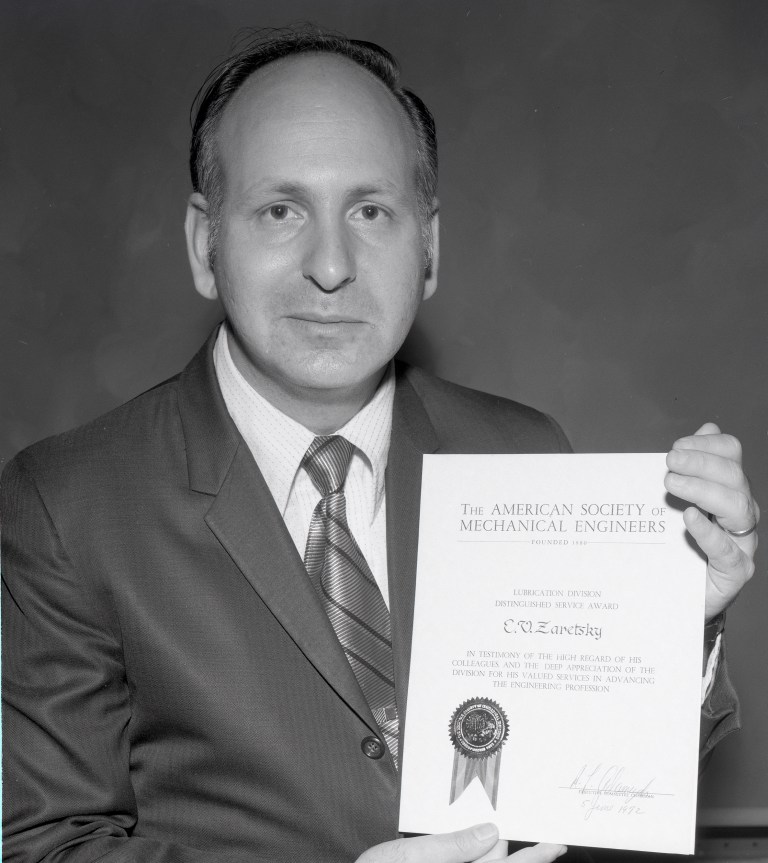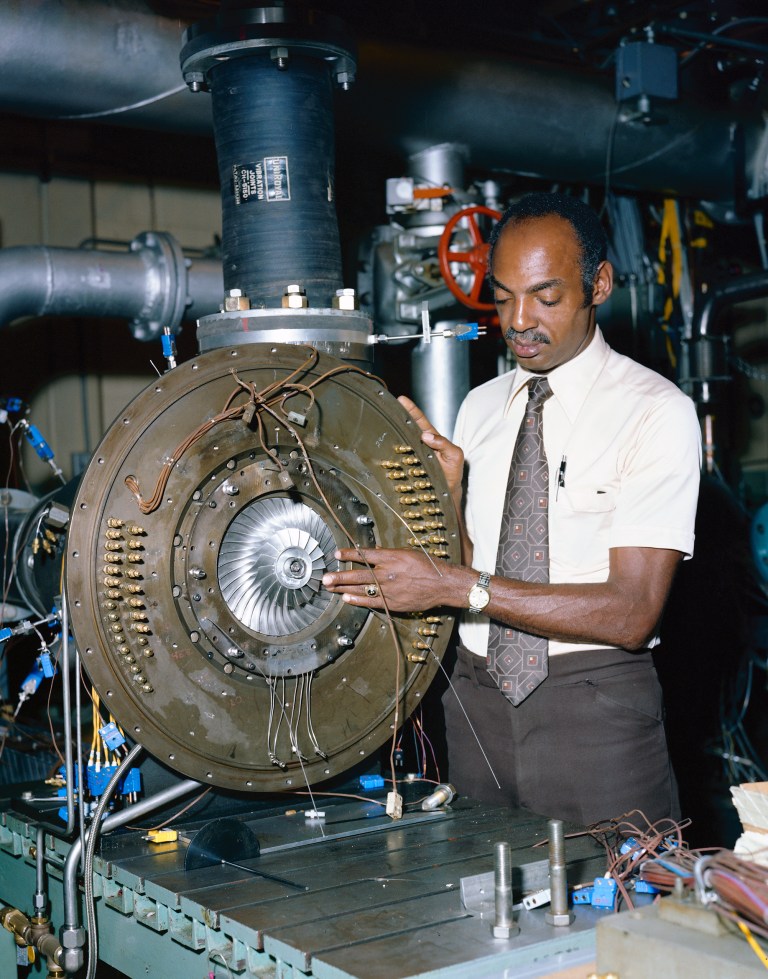
Donald J. Campbell
Former Director, Glenn Research Center, Mar. 1994 to Sept. 2003
Donald J. Campbell served as Center Director at NASA’s Glenn Research Center (known as NASA’s Lewis Research Center until 1999) from March 1, 1994 to September 30, 2003. He is the center’s second longest serving director, its first minority director, and only the second director to come from outside the agency. As director, Campbell dealt with major agency cutbacks and reorganizations that resulted in the loss of a number of key programs. Campbell came to NASA with over 30 years of aeropropulsion engineering and management experience with the Air Force.
A native of Lima, Ohio, Campbell earned his bachelor’s degree in mechanical engineering from Ohio Northern University in 1959. He began his governmental career in 1960 as an engineer at Wright Patterson Air Force Base (WPAFB)’s Aero Propulsion Laboratory (APL). He was initially involved in testing aircraft engine components, then moved on to advanced development assignments including the Turbine Engine Program and engine definition studies with General Electric and Pratt & Whitney. During this period Campbell earned his master’s degree in mechanical engineering from Ohio State University in 1974. From 1977 to 1979, he managed all of the propulsion work performed at the APL.
In the 1980s and 1990s, Campbell progressed through a series of managerial positions at WPAFB. He led the laboratory’s F-107 Joint Engine Project Office and managed the Full-Scale Engine Research Program, which included testing at NASA Lewis. He also served as acting director of the National Aerospace Plane Program (NASP) Office; acting deputy director of the APL; deputy program director of the Propulsion System Program Office; and director of the Aeropropulsion and Power Directorate. Campbell was transferred to the Pentagon where he directed the Air Force’s Science and Technology Department from 1992 to 1994.
On January 6, 1994, NASA announced that Campbell would take over the center director position at NASA Lewis. Campbell was familiar with the center through past collaborations with the Air Force. The center, however, was entering a period of turmoil. Congress vowed to dramatically reduce federal spending in the coming years, and the restructuring of the space station program led to the disbanding of an entire directorate at Lewis. Campbell would be responsible for downsizing the workforce to meet the federal mandates.
To plan for the budget reductions, NASA Administrator Daniel Goldin initiated a Zero Base Review to reassess all aspects of the agency’s spending and programs. This exercise led to dramatic shifts in responsibilities that included the center’s loss of its renowned launch vehicles role. Campbell, who experienced deep budget cuts during his time with the Air Force, reorganized the staff in 1996 to adapt to the center’s new budget levels and responsibilities. He steered the center into an even split between aeronautics and space.
During Campbell’s tenure, the center made significant aeropropulsion advances, conducted key microgravity experiments aboard the space shuttle, launched the Cassini-Huygens spacecraft to Saturn, and performed an array of testing to support the space station power system.
In the late 1990s, Campbell initiated efforts to remove the Plum Brook Reactor Facility and the Rocket Engine Test Facility. The former had been idle for over 20 years; the latter was active but its location was needed for a runway expansion at the Cleveland Hopkins Airport. These were the center’s first demolitions of major facilities.
In the fall of 1998, Ohio politicians successfully sponsored a bill that would rename NASA Lewis as the Glenn Research Center to honor John Glenn, who had recently returned to space aboard the shuttle. The official changing of the name came on May 7, 1999.
Following the September 11, 2001 attacks on the World Trade Center and the Pentagon, airport officials ordered a suspicious airliner to park away from the main terminals. Since the aircraft was near NASA Glenn’s front gate, Campbell dismissed center employees for the day and instructed them to exit through the rear gate. The center reopened two days later with elevated security actions and strict restrictions on visitors.
In June 2002 the center partnered with local medical institutions to establish the John Glenn Biomedical Engineering Consortium to facilitate the transfer of NASA technology into medical applications.
In January 2003, the space shuttle Columbia was destroyed during reentry. NASA Glenn contributed to the accident investigation and the Return to Flight activities. That October, Campbell was selected to lead NASA’s Special Projects Office of Nuclear Power Systems at NASA Headquarters. He retired from government service in April 2004.
Campbell’s awards include the 1998 Laboratory Director of the Year by the Federal Laboratory Consortium for Technology Transfer, the Air Force Systems Command Certificate of Merit, the Meritorious Civilian Service Award, the Presidential Rank Award of Meritorious Executive, and Senior Executive Service.
































